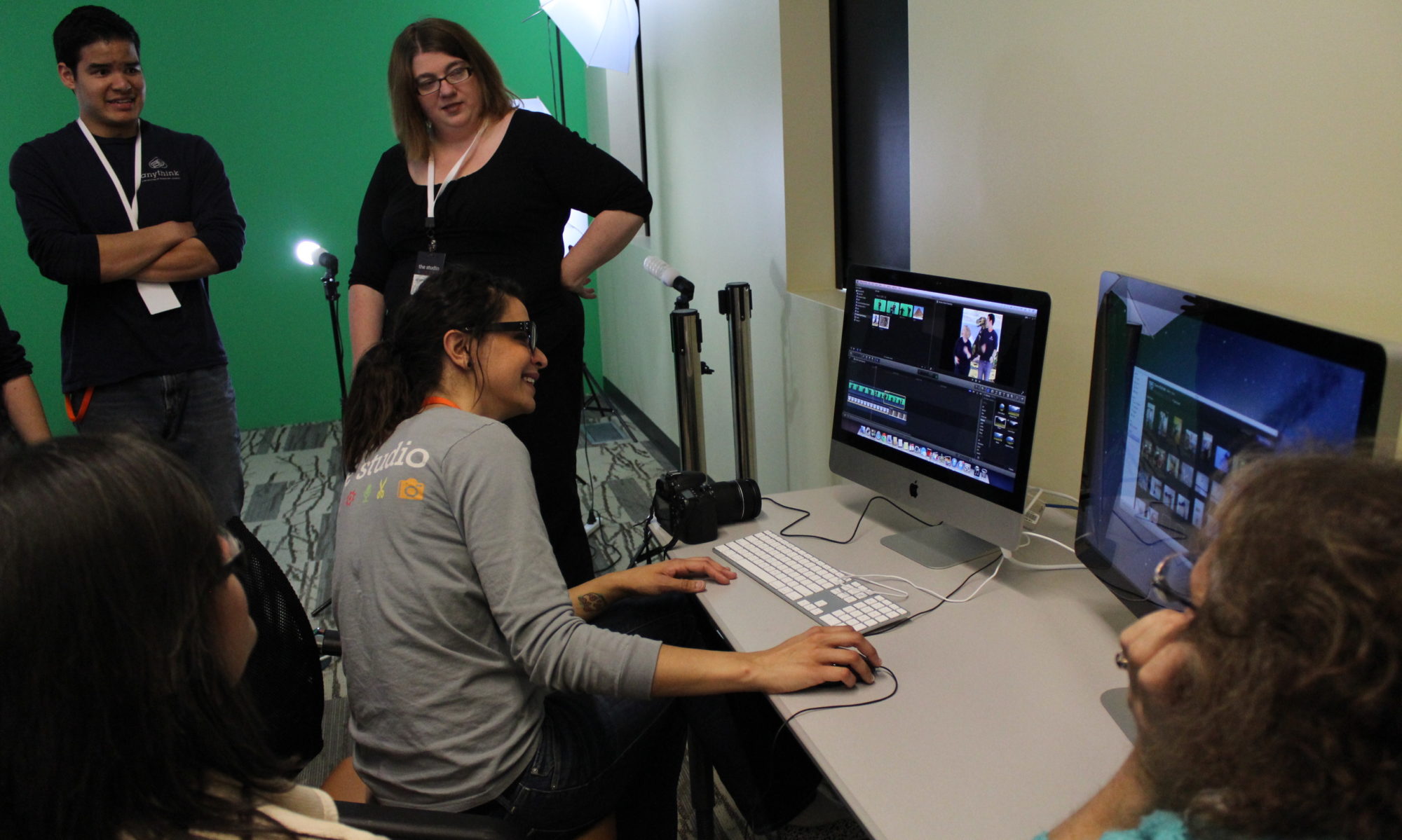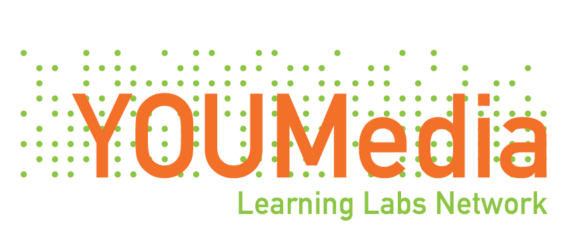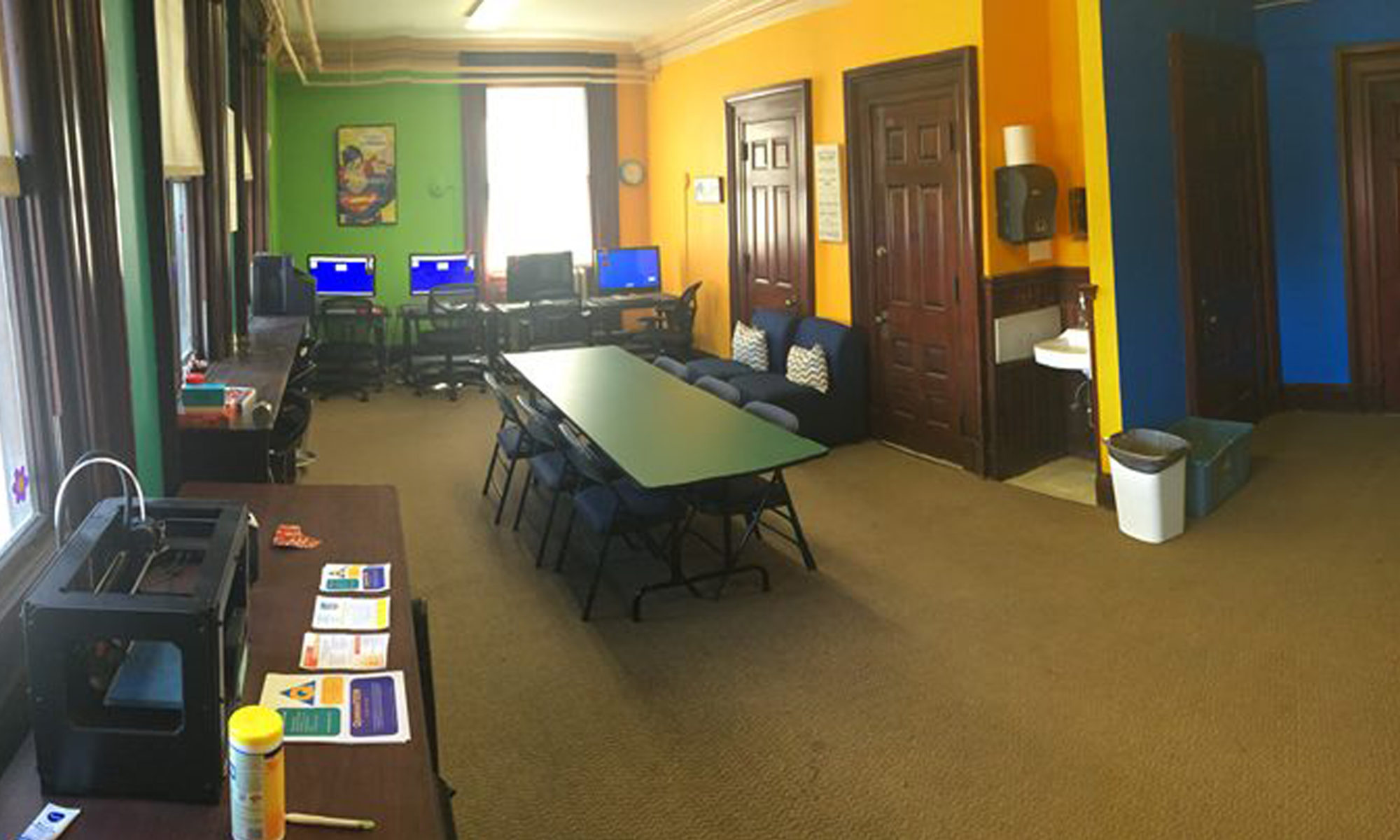By Katelyn Cole of QuaranTEEN @ Lynn Public Library
Space isn’t always plentiful—or possible—within existing buildings. When expanding our program at the Lynn Public Library, we looked at how limited space and an increase in demand was affecting the overarching goals of getting teens to fully invest in maker programs.
The Lynn Public Library renovated an office area that previously housed 4 employees to create our teen tech lab, QuaranTEEN. The space is approximately 30’x12’. This includes; 4 desktop computers, a table with 8 chairs, a 24’ monitor with Xbox and seating for 4, and 3 bar stools with an area for laptops or tablets. The maximum occupancy is 24, but the space holds 15 comfortably. QuaranTEEN was created keeping the HOMAGO principles (Hanging out, Messing Around, Geeking Out), in mind.
With the increase in popularity of the lab, we were running out of space to do programs and losing the ability to allow teens to focus on projects. During open lab times, the room was mainly being used for Xbox, computer use, homework and hanging out. Focused programming was nearly impossible due to various activities going on simultaneously in such tight quarters. While we were successful in having a number of teens utilizing the lab, our goal of teens reaching the geeking out stage of engagement was a struggle. The limitation of space created a barrier for teens’ learning – our design was ideal for hanging out and messing around, but not conducive to geeking out.
How do you create space when you need it the most? Many of us have small spaces or are in temporary/transitional situations when doing programs. But how does this structure affect how teens invest in our programs? Knocking down walls and creating a new space was not an option for us or many other institutions, so we had to look at how we could provide an opportunity for teens within our limitations.
We wanted to dive deeper into observing the teens in the space. The staff started using a daily journal to monitor what equipment or supplies were being used and how teens were engaging with them. We also began monitoring how many teens were coming in each day and how long they were staying in the space. This helped solidify the initial observation that trying to run in depth programing during open lab times was not going to work for us. We needed another way to reach the teens within the constraints of our building.
We decided to try creating a new specific programming session. Our space was originally open Tuesdays, Wednesdays and Thursdays after school. We added another day, Mondays, to the lab schedule that was specifically designed for maker/STEM programs. By creating an extra opportunity for the teens we were able to expand our space without taking down walls. We were able to create 2 or 3 projects for teens to dive into on Mondays. We limited some equipment use that did not correlate with the programs those days. This helped the teens to focus and not become overwhelmed with all that was going on in the small space. We were able to accomplish this with almost no push back about limiting equipment because we had added an additional day and did not take away time from open lab times.
While this adjustment to our space has worked for now, we must continue to observe and adjust as needed. One of the main takeaways is we must remember that these spaces are ever evolving with our staff, audience, and equipment.
Related Resource:


